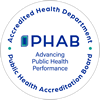
Health
PFAS
Perfluoroalkyl and polyfluoroalkyl substances (PFAS) are a large group of human-made chemicals that are widespread in the environment. High concentrations of PFAS can affect health.
PFAS health effects and ways to reduce exposure
PFAS are a large group of human-made chemicals that are fire resistant and repel oil, stains, grease, and water. They do not change or break down easily. As a result, they are very widespread in the environment and can be found in air, water, and soil. Experts are concerned by the potential effects of high amounts of PFAS on human health.
PFOA and PFOS were two of the most widely used PFAS chemicals. In recent years as understanding about the impacts of these chemicals increased, PFOA were replaced with GenX chemicals and PFOS were replaced with PFBS. These newer chemicals can also impact health.
How PFAS affects health
How PFAS Impacts Your Health |PFAS and Your Health | ATSDR (cdc.gov)
How people are exposed to PFAS
Almost everyone has been exposed to PFAS from environmental exposures or using products that have PFAS. PFAS are in firefighting foams, stain repellants, nonstick cookware, waterproof clothing and shoes, fast food wrappers, personal care products, and many other consumer goods. Although some PFAS are no longer used, they can still be found in the environment because these chemicals do not break down easily. Because PFAS are so widely used, they are also in our lakes and streams, fish, and drinking water supplies.
How to reduce your exposure to PFAS
Reduce use of products that contain PFAS:
Thousands of PFAS chemicals are in production across the United States. Some PFAS chemicals are no longer made in the United States but are still produced in other countries and can be imported into the United States in consumer goods. To reduce PFAS exposure:
- Check product labels for ingredients that include the words "fluoro" or "perfluoro."
- Be aware of packaging for foods that contain grease-repellent coatings. Examples include microwave popcorn bags and fast-food wrappers and boxes.
- Avoid stain-resistance treatments. Choose furniture and carpets that aren’t marketed as “stain-resistant,” and don’t apply finishing treatments to these or other items. Avoid clothing, luggage, camping, and sport equipment that are treated for water or stain resistance.
- Avoid or reduce use of non-stick cookware. Stop using products if non-stick coatings show signs of wear.
Reduce PFAS levels in the water you drink:
To reduce exposure to PFAS and protect health, reduce or eliminate the use of drinking water containing PFAS or supplement it with an alternative source. See this guide to help you learn about how you can reduce the levels of PFAS in your home drinking water: Reducing PFAS in Your Drinking Water (wisconsin.gov)
Alternate sources of drinking water include:
- Water from a source that has been tested for PFAS and has levels below the Wisconsin Recommended Groundwater Enforcement Standard level of 20 parts per trillion.
- Water from a treatment system certified by ANSI/NSF Standards 53 or 58 to reduce PFAS.
- Bottled water that is labeled with the NSF and/or IBWA seal.
- Both granular activated carbon and reverse osmosis filters can reduce PFAS in water. When amounts of PFAS in your water are higher than the Wisconsin Recommended Groundwater Enforcement Standard level of 20 parts per trillion, we recommend the use of a filtration system for: drinking, cooking, making baby formula or food, washing fruits or vegetables, brushing teeth, feeding pets.
Follow guidelines for eating fish
Protect your health after being in lakes and streams:
Touching lake, river, or stream water that has PFAS is not an immediate health concern. You should avoid drinking or accidentally swallowing water. You should also avoid touching foam on the water that might be contaminated with PFAS. After being in water or touching foam, wash hands and rinse pets to prevent swallowing PFAS that may be on skin or fur.
Foam that has PFAS
- can have bright white coloring
- tends to pile up like shaving cream
- can be sticky
- may blow inland and collect on lake shores and riverbanks
- is usually lightweight
Naturally occurring foam
- is off-white and/or brown
- often accumulates in bays where there is circular movement of water or river blockages
- may smell earthy or fishy
Continue breastfeeding:
Based on current research, the benefits of breastfeeding outweigh the risks for infants exposed to PFAS in breast milk. PFAS can be passed to a baby through breast milk. Parents should talk to their doctor if they have concerns about breastfeeding and PFAS.

Health Department Office Location
2nd Floor, 300 4th St. N.
La Crosse, WI 54601
Main Business Phone: 608-785-9872
Main Fax: 608-785-9846
Email:
[email protected]
In a public health emergency call 911
If you need assistance to access or use information on this website or Health Department services, please let us know
Interpretation services available upon request
Tell us how we are doing! Customer Satisfaction Survey
Office Hours: 8:00am to 4:30pm Monday-Friday; some service hours may vary
Collaboratively promoting a healthful community for all people.
La Crosse County Health Department complies with applicable Federal civil rights laws
and does not discriminate on the basis of race, color, national origin, age, disability, or sex.

